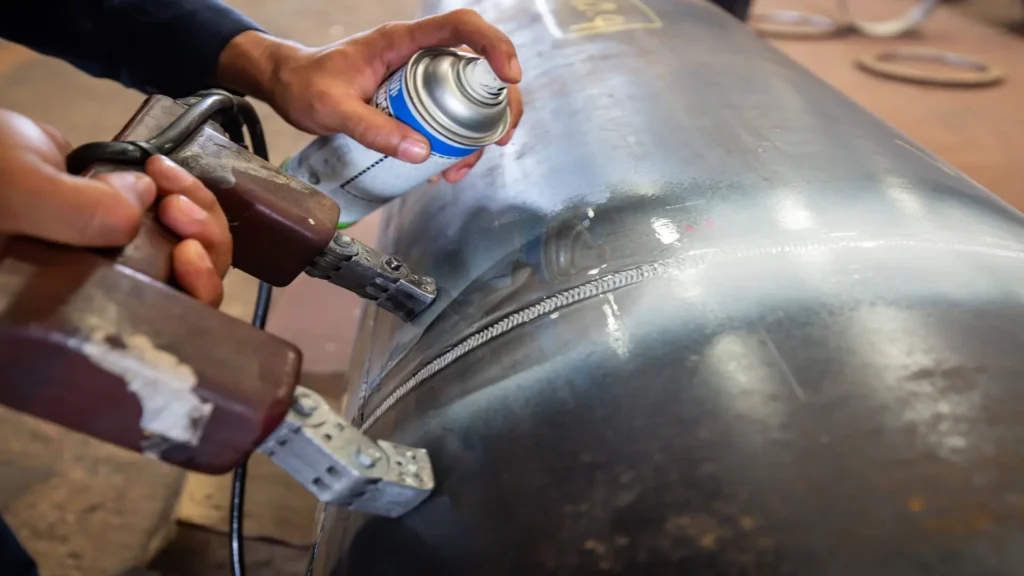Finding the Right Provider for Welding Inspection Madison: Key Considerations
Understanding the Fundamentals of Welding Inspection to Ensure Quality and Safety
In the world of modern design, welding inspection stands as a foundation for ensuring both the high quality and safety of structural productions. What are the nuances of these examination methods that make them vital for maintaining structural honesty?

Significance of Welding Assessment
In the world of commercial fabrication, the significance of welding assessment can not be overemphasized. Welding examination plays a crucial role in guaranteeing the stability, safety and security, and long life of bonded frameworks. Offered the varied applications of welding in industries such as construction, automotive, aerospace, and shipbuilding, the need for strict quality assurance steps is critical. Appropriate evaluation makes sure that welds satisfy specified requirements and codes, which is important for avoiding structural failures that could bring about tragic effects.
The process of welding inherently entails complicated variables, including temperature level, product residential properties, and environmental conditions, every one of which can influence the quality of the weld. A detailed assessment determines defects such as splits, porosity, and incomplete fusion, which can jeopardize the strength and integrity of the weld. By finding these problems early, rehabilitative actions can be taken, thereby reducing the danger of failure and linked costs.
In addition, welding inspection contributes to governing compliance, as several industries are governed by rigorous safety criteria and guidelines. Failing to comply with these guidelines can cause financial charges and lawful liabilities. Inevitably, welding inspection not only safeguards physical frameworks but likewise shields human lives and supports market online reputations.

Secret Welding Assessment Approaches
Although welding assessment is important to making sure the high quality and safety of bonded frameworks, it is the certain methods employed that establish the performance of the assessment process. Key welding inspection approaches can be generally categorized right into non-destructive screening (NDT) and harmful testing.
Magnetic particle testing and fluid penetrant screening are surface area assessment approaches used to find surface area and near-surface imperfections. These comprehensive assessment approaches make certain that welds meet market requirements and safety and security needs, thereby making sure architectural honesty and efficiency.
Role of Certified Examiners
Qualified assessors play a crucial role in the welding evaluation process, making sure that all welds abide with stringent industry standards and security guidelines. Their know-how is essential in identifying problems or irregularities that may compromise the structural integrity of a weld. By meticulously examining each weld, certified assessors aid protect against possible failings that can cause harmful accidents or costly repairs.
To become qualified, assessors have to go through extensive training and testing, which familiarizes them with numerous welding methods, materials, and testing methods. This thorough expertise enables them to assess weld quality effectively and make educated judgments concerning their security and reliability. In addition, qualified examiners are competent in interpreting plans and specs, guaranteeing that the welding job lines up with the project's layout requirements.
An integral part of their role is to document their searchings for extensively, giving a detailed record of the evaluation procedure. Their payment Homepage is crucial in maintaining high levels of quality and safety in welding operations.

Devices Used in Welding Inspection
Welding inspectors rely upon a selection of specialized devices to do their responsibilities efficiently, guaranteeing each weld meets the essential criteria. Among these tools, aesthetic examination help like magnifying glasses and mirrors are fundamental, permitting examiners to closely examine welds for surface area flaws such as fractures, porosity, and undercut. Calipers and fillet weld gauges are crucial for gauging weld dimensions to verify conformity with design requirements.
Advanced devices extend past visual help, consisting of non-destructive testing (NDT) tools. Ultrasonic testing tools are essential in spotting subsurface flaws, using sound waves to disclose interior discontinuities without endangering the weld's integrity. In a similar way, radiographic testing uses X-rays or gamma rays to catch pictures of a weld's interior, highlighting possible problems.
Magnetic particle testing is an additional vital device, particularly for identifying surface and near-surface discontinuities in ferromagnetic materials. By using ferrous particles and magnetic areas, assessors can identify problems that might otherwise be undetectable.
Dye penetrant inspection is commonly used for non-ferrous materials, supplying a contrast-enhanced aesthetic check for surface-breaking flaws. Welding Inspection Madison. With each other, these tools allow welding assessors to adequately evaluate weld high quality, making certain safety and dependability in different applications throughout sectors
Ensuring Structural Stability

Welding treatments must stick to recognized standards and codes, such as those specified by the American Welding Culture (AWS) or the International Organization for Standardization (ISO) These standards make sure that the welds can endure ecological elements and functional anxieties. Qualified and licensed welders play an important role in this procedure, as their knowledge ensures that methods are applied properly, minimizing flaws such as cracks, porosity, and insufficient fusion.
Post-weld evaluation is one more crucial component of verifying structural stability. These examinations confirm that the welds meet the required quality requirements, supplying guarantee of their longevity and reliability.
Final Thought
The principles of welding assessment are important for keeping the high quality and safety of bonded structures. The usage of specialized tools better improves the examination process, ultimately securing human lives and prolonging the life-span of welded buildings.
Welding evaluation plays a critical function in ensuring the stability, safety and security, and durability of bonded structures.Although welding assessment is critical to making sure the top quality and security of bonded frameworks, it is click site the particular approaches employed that identify the performance of the inspection process. Trick welding inspection techniques try this web-site can be generally categorized into non-destructive screening (NDT) and devastating testing.Licensed assessors play a pivotal function in the welding assessment procedure, ensuring that all welds conform with rigorous industry standards and security guidelines.The principles of welding inspection are vital for keeping the top quality and safety of welded frameworks.